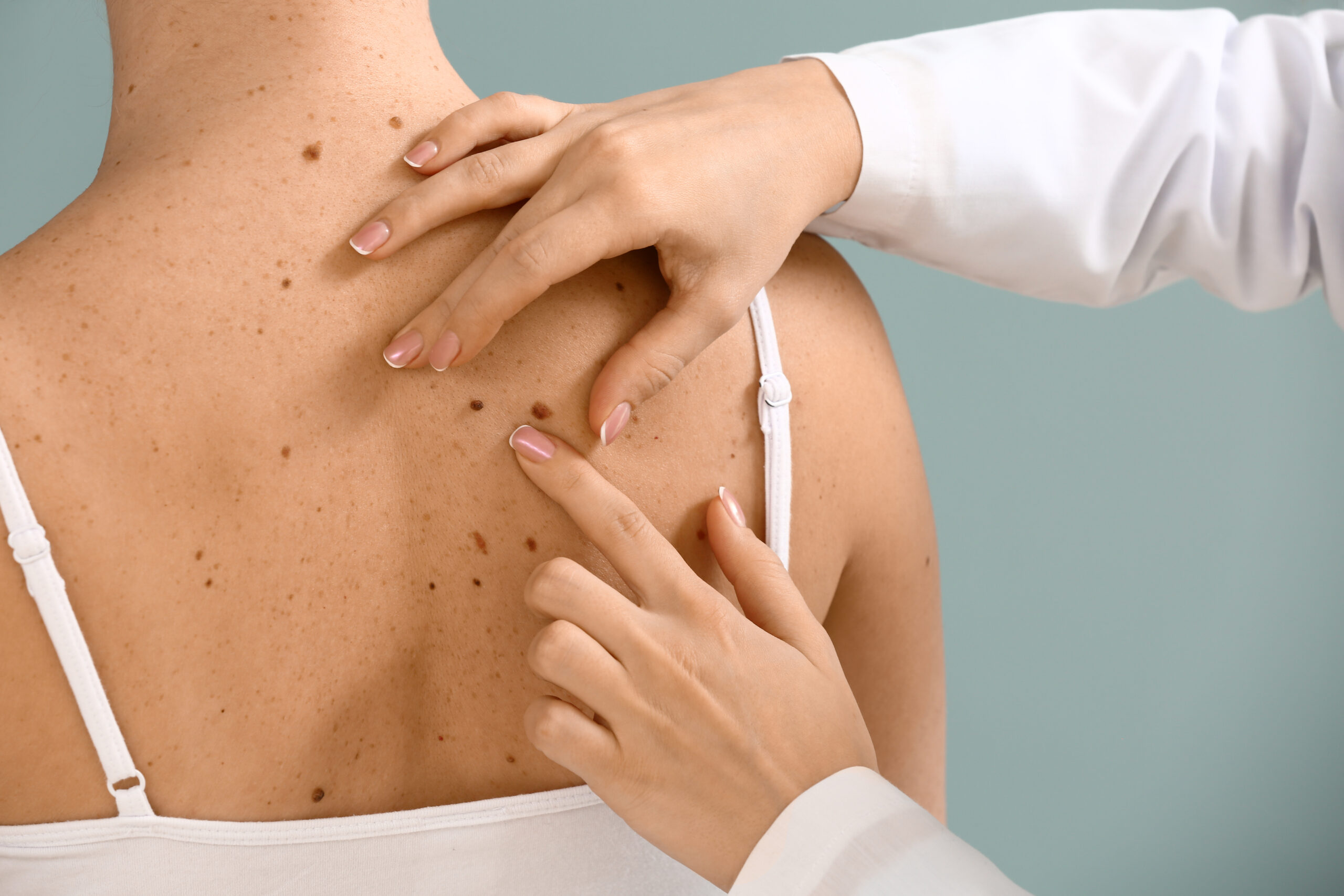
Dermatologist examining moles of patient on grey background
One of the most serious forms of skin cancer, melanoma can occur practically anywhere on your body. Whether it is an area of skin that is mole-free or an existing mole, melanoma can be extremely serious if not detected as early as possible, nearly your whole body is at risk. Common in both men and women, it can occur on your face, arms, or the lower portions of your legs. If you spend a large amount of time in the sun without being protected by sunscreen or clothing, you are at greater risk of developing this form of cancer. When you are performing a skin check, here are some signs that may indicate the presence of melanoma.
Painful Lesions
In some cases, people who develop melanoma first begin to notice an assortment of painful lesions on different parts of their bodies. Most often, these lesions itch or have an intense burning sensation. Although these lesions can be found on areas of the skin that have had long-term exposure to the sun, they can also occur on skin protected from the sun’s rays.
Unusual Moles
Most often when you develop melanoma, the obvious sign will be a mole or moles that start to change their color, size, or feel different than usual. A mole that bleeds often will usually be a possible sign of melanoma, so don’t procrastinate in getting any abnormal moles checked out by a dermatologist. If melanoma is present, mole removal may be necessary. Doing so can help prevent cancerous cells from spreading to other parts of your body.
Irregular Borders
As you may know, most moles tend to have well-defined borders. Should you do a skin check and discover small lesions that have irregular borders and various colors, they need to be examined right away. When looking at these lesions on your skin, you will notice portions of them will vary in color from red, pink, or white to a bluish or bluish-black color.
Dark Lesions
Finally, be wary if your skin contains lesions that are very dark. If your skin tone is darker, these lesions can be even more difficult to spot, since they most often occur on your soles, palms, or underneath toenails or fingernails. In addition to these areas, these lesions can also be found on the inside of your mouth or nose.
Unfortunately, many people die from melanoma each year, usually due to it not being detected early enough. Along with doing regular skin checks yourself, you should also visit a dermatologist regularly for routine examinations. By doing so, melanoma can be detected and treated as quickly as possible.


